|
WWII 1943 US ARMY Officer Jacket -
When the United States entered World War Two much of the military was unprepared for combat.
The unforms and equipment employed was very antiquated, most of it dated back to World War one.
The US Army dress uniform was an exception. It had seen some improvement when compared to
its much cruder descendant. Both types of uniforms were made of
wool. However, the one used
in WWII was more refined.
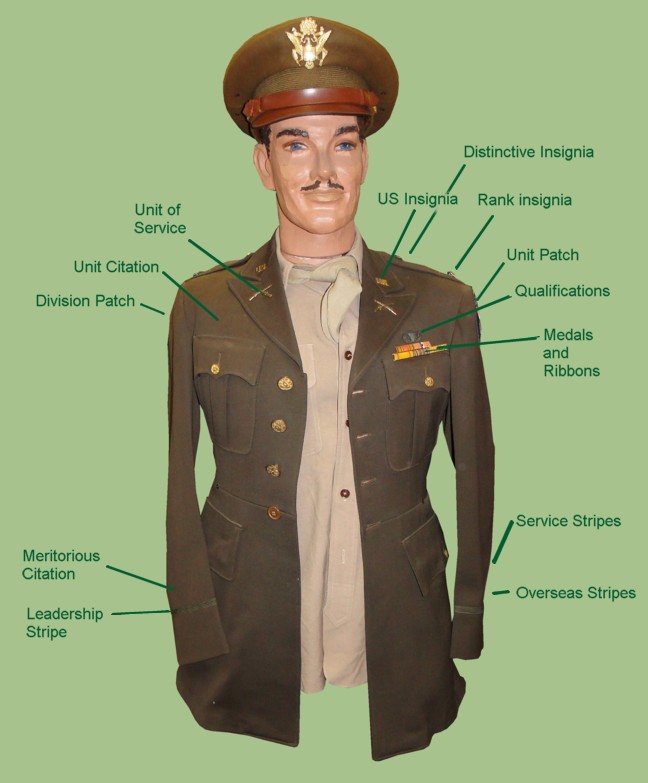 US ARMY OFFICER RANK
US ARMY OFFICER RANK
As long as you are in the army you will be looking at insignia. Every soldier wears them to show
his grade. Even the buttons on the uniform and the device on your service cap are forms of insignia.
All types are symbols. This section discusses insignia of grade.
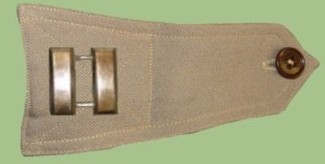
|
The soldiers of the continental army in our revolutionary war showed their grade differently than was
done during WWII. General Washington ordered sergeants to sew a stripe of bright red cloth on their
shoulders, and corporals green stripes.
Beginning on 1780, the generals displayed stars on shoulder pieces known as epaulets. The colonel's
eagle dates back to 1832, and the oakleaves that Lieutenat Colonels and majors wear were first used
in 1836.
The photo on the left shows the placement of the rank of Captain on an epaulet.
|
Branch insignia does not go as far back as grade insignia because in the old days the Infantry, Cavalry,
Artillery and other branches had different kinds of uniforms. The oldest branch insignia in the army is the
"Shell and flame" of ordinance which came into existance in 1832. The insignia for infantry used during WWII
dates back to 1875.
The following table illustrates the insignia of grade for officers used during WWII.
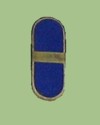 |
 |
 |
 |
 |
| Flight Officer |
Warrant Officer Junior Grade |
Chief Warrant Officer |
Second Lieutenant (Gold) |
First Lieutenant (Silver) |
 |
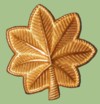 |
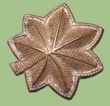 |
 |
 |
| Captain |
Major (Gold) |
Lieutenant Colonel (Silver) |
Colonel |
Brigadier General |
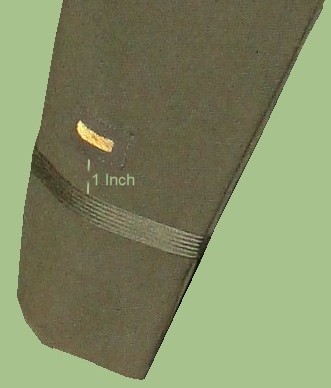 |
Placement of overseas stripes, service stripes, leadership stripe and meritorious unit citation on
the sleeve.
Also shown here is the placement of the "Honorable discharge" patch. Right side of the chest.
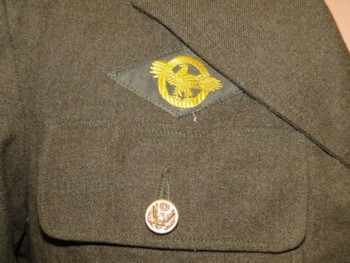
|
MISCELLANEOUS PATCHES
 |
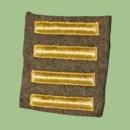 |
 |
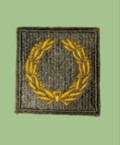 |
Honorable Discharge
Was awarded to United States military service members who were discharged under honorable conditions during World War II.
|
Overseas Stripes
Each stripe indicates six months of service in a combat zone.
|
Service Stripes
Each stripe indicates three years of service.
|
Meritorious Unit Citation
Displays exceptionally meritorious conduct in the performance of outstanding service, heroic deeds, or valorous actions.
|
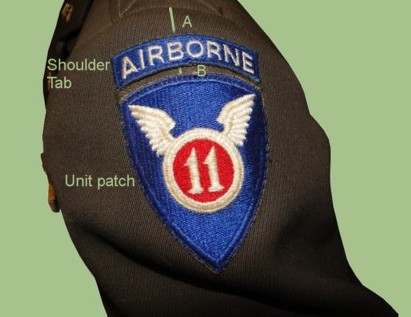 |
Placement of Unit patches on left shoulder of the uniform.
DISTANCE A: 1 Inch
DISTANCE B: 1/2 to 1 Inch
Shoulder tabs are centered between unit patach and shoulder seam. If no patch, 1 inch below
shoulder seam.
Unit patch 1/2 to 1 inch below shoulder seam and centered.
|
UNIT PATCHES - GENERAL COMMANDS
There were three General Commands controlling the United States armed forces during WWII. Each was an
autonomus component of the entire operation. One was in charge of air warfare. The other was in
charge of all ground forces. The last one encompassed six technical units.
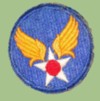 |
 |
 |
Army Air Forces
Active:
1941 - 9/18/1947
WWII Theater:
All
Obtain
|
Army Ground Force
Active:
1942 - 1948
WWII Theater:
All
Obtain
|
Services of Supply
Active:
1942 - 1946
WWII theater:
All
Obtain
|
UNIT PATCHES - THE FOUR ARMIES
The United States armed forces were divided into four different armies. They were labeled First army,
Second army, Third army and Fourth army.
 |
 |
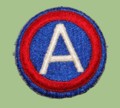 |
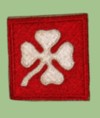 |
First Army
Active:
1918 - 1919
1932 - Present
WWII Theater:
West Europe, Normandy.
Obtain
|
Second Army
Active:
1918 - 1919
1933 - 1966
1983 - 1995
2014 - Present
WWII Theater:
USA
Obtain
|
Third Army
Active:
1918 - 1919
1932 - 1974
1982 - Present
WWII Theater:
Europe
Obtain
|
Fourth Army
Active:
1932 - 1971
WWII Theater:
USA
Obtain
|
UNIT PATCHES - ARMY CORPS
The structure of a field corps in the United States Army is not permanent; many of the units that it commands are allocated to it as needed on an ad hoc basis. On the battlefield, the corps is the highest level of the forces that is concerned with actually fighting and winning the war. Higher levels of command are concerned with administration rather than operations, at least under current doctrine. The corps provides operational direction for the forces under its command.
 |
 |
 |
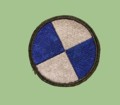 |
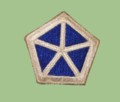 |
1st Corps
Active:
1918 - Present
WWII theater:
South Pacific
Obtain
|
2nd Corps
Active:
1 Aug 1940 - 10 Oct 1945
WWII Theater:
Europe and Africa
Obtain
|
3rd Corps
Active:
1918 - 1919
1927 - 1946
1951 - 1959
1961 - Present
WWII theater:
USA
Obtain
|
4th Corps
Active:
1918 - 1919
1939 - 1945
1958 - 1968
WWII Theater:
Europe
Obtain
|
5th Corps
Active:
1918 - 1919
1922 - 1924
1940 - 2013
WWII theater:
Europe
Obtain
|
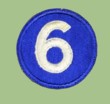 |
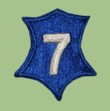 |
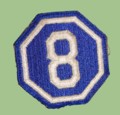 |
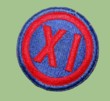 |
 |
6th Corps
Active:
1918 - 1919
1940 - 1946
1946 - 1950
1951 - 1953
1957 - 1962
WWII Theater:
Europe
Obtain
|
7th Corps
Active:
1918 - 1919
1921 - 1946
1950 - 1992
WWII Theater :
Europe, Normandy, Ardenes
Obtain
|
8th Corps
Active:
1918 - 1919
1940 - 1945
WWII Theater:
Europe, Normandy, Ardenes
Obtain
|
9th Corps
Active:
1940 - 1994
WWII Theater:
Pacific
Obtain
|
11th Corps
Active:
1942 - 1945
Theater:
Pacific
Obtain
|
UNIT PATCHES - DIVISIONS
After the civil war, patches were discontinued, but they appeared again during World War I, this time to stay.
One of the big problems that commanders were facing at the time was the ability to reassemble their troops after a
battle. The British came upon the idea of sewing a piece of colored cloth on the back of the jacket, just below
the neck. The idea was foe all the men wearing the same colored cloth to assemble under the nearest officer who
wore a like piece.
It was the American doughboy, however, who first wore a shoulder patch. This happened more or less by accident.
In the summer of 1918 the 81st (Wildcat) Division sewed a picture of a wildcat on their shoulder sleeves when
going through Hoboken on teh way to France. In France, General Pershing heard of this and ordered all the patches
to be taken off. Later he changes his mind and not only allowed the Wildcats to keep their shoulder patches but
required everyone to wear something similar.
 |
 |
 |
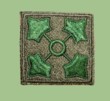 |
 |
| 1st Division |
2nd Division |
3rd Division |
4th Division |
5th Division |
 |
 |
 |
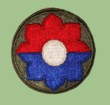 |
 |
| 6th Division |
7th Division |
8th Division |
9th Division |
26th Division |
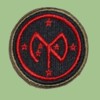 |
 |
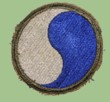 |
 |
 |
| 27th Division |
28th Division |
29th Division |
30th Division |
31st Division |
 |
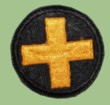 |
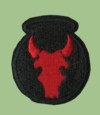 |
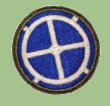 |
 |
| 32nd Division |
33rd Division |
34th Division |
35th Division |
36th Division |
 |
 |
 |
 |
 |
| 37th Division |
38th Division |
39th Division |
40th Division |
41st Division |
 |
 |
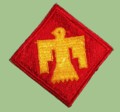 |
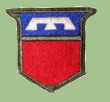 |
 |
| 43rd Division |
44th Division |
45th Division |
76th Division |
77th Division |
 |
 |
 |
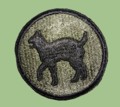 |
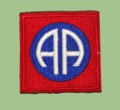 |
| 78th Division |
79th Division |
80th Division |
81st Division |
82nd Division |
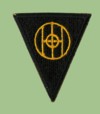 |
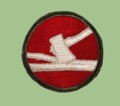 |
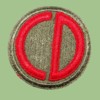 |
 |
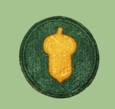 |
| 83rd Division |
84th Division |
85th Division |
86th Division |
87th Division |
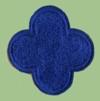 |
 |
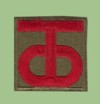 |
 |
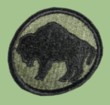 |
| 88th Division |
89th Division |
90th Division |
91st Division |
92nd Division |
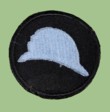 |
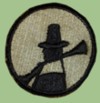 |
 |
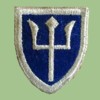 |
 |
| 93rd Division |
94th Division |
96th Division |
97th Division |
98th Division |
 |
 |
 |
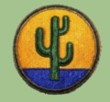 |
 |
| 99th Division |
100th Division |
102nd Division |
103rd Division |
104th Division |
 |
| Hawaiian Divisions |
|
This page is a recognition and identification guide for WWII US military uniforms.
Multiple detailed photos of a specific sample are provided. Descriptions point out
clearly defined points that should be noted.
One of the most commonly asked questions is "How much is my WWII US uniform worth?".
A price guide is included here to address this question. The value of the uniforms is
reviewed over a period of several years. A trend can be observed. The present worth
of the American military uniforms in the collector's market is illustrated.
This service is provided free of charge to the visitor/enthusiast courtesy of
MilitaryItems.com,
a company dedicated to the preservation of military history and to providing quality
military antiques and collectibles to museums, institutions and the general public.
|
|
|
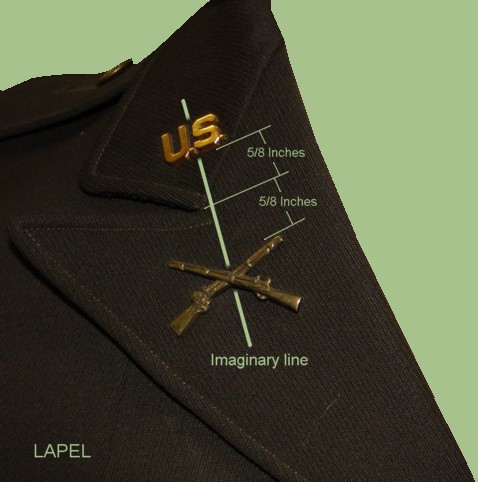 |
Placement of collar insignia on the lapel of the tunic.
Draw an imaginary line along the lapel. The insignia must be centered to the line.
The distance between the insignia and lapel split shall be 5/8 of an inch.
|
US ARMY OFFICER COLLAR INSIGNIA
Also known as branch insignia. It is used to determine the unit to which the soldier belongs. While not as old as
the rank/grade insignia because in the old days the infantry, cavalry, artillery and other branches had different
kinds of uniforms. The oldest branh insignia in the army is the "shell and flame" of ordenance which came into
existance in 1832. The present insignia for infantry dates back to 1875. Before that its insignia was a horn and
bugle, which represented the horn used by light infantrymen for signalling, as the whistle is used in WWII.
For a while in 1875, the miniature rifles worn were the model used at the time, but models kept changing, and in
1924 the army adopted for the infantry insignia the Flintlock musket first issued to American troops. The crossed
canons of the artillery was adopted in 1836, and the crossed sabers, insignia of the old cavalry, in 1851.
 |
 |
 |
 |
 |
US Collar Insignia
Indicates that the soldier belongs to the United States armed forces. As a general rule it was always placed on the right
side lapel.
|
Army Air Corps |
Corps of Engineers |
Field Artillery |
Coastal Artillery |
 |
 |
 |
 |
 |
| Cavalry |
Infantry |
Signal Corps |
Armored Force |
Ordenance Department |
 |
 |
 |
 |
 |
| Chemical Warfare Service |
QuarterMaster Corps |
Transportation Corps |
Medical Corps |
Adjutant General's Assistant |
 |
 |
 |
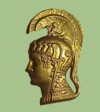 |
 |
| Inspector General's Department |
Judge Advocate General's Department |
Military Police |
WAACS |
Christian Chaplain |
 |
 |
 |
 |
 |
| Jewish Chaplain |
General Staff |
Finance Department |
National Guard Bureau |
Aid to General |
 |
 |
 |
 |
|
| Aid to Liutenant General |
Aid to Major General |
Aid to Brigadier General |
Army Band |
|
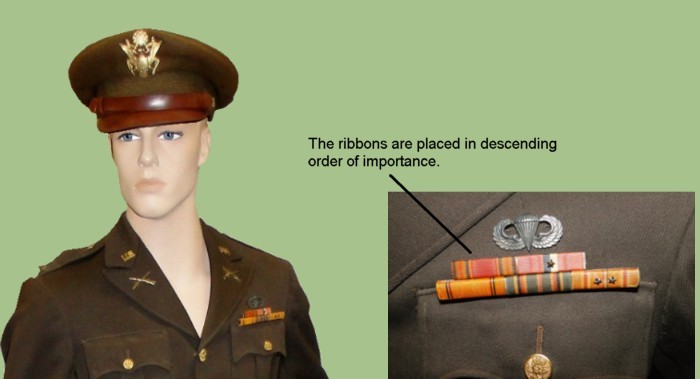
US ARMY QUALIFICATIONS, MEDALS AND AWARDS
The United States army issued different types of awards in order to recognize the diferent achievements of a soldier. Most
of the awards were placed on the left side of the uniform. Above the top pocket. Among the exceptions include the
Presidential Unit Citation. A table showing some of the awards follows.
 |
 |
 |
 |
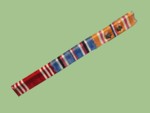 |
Expert Badge
To earn the qualificatin for pistol at the Combat Pistol Qualification Course, one must have a combined hit count of 26 out of 30.
|
Sharpshooter Badge
To earn the qualificatin for pistol at the Combat Pistol Qualification Course, one must have a combined hit count of 21 out of 30.
|
Marksman Badge
To earn the qualificatin for pistol at the Combat Pistol Qualification Course, one must have a combined hit count of 16 out of 30.
|
Combat Infantry Badge
The badge is awarded to infantrymen and Special Forces soldiers in the rank of Colonel and below, who personally fought in
active ground combat while assigned as members of either an infantry, ranger or Special Forces unit, of brigade size or smaller,
any time after 6 December 1941.
|
Medal Ribbons
The medal ribbons were worn, instead of the medal itself, because they took less space and avoided noise made by medals
hitting each other. The ribbons are displayed in order of importance. From right to left.
|
 |
Presidential Unit Citation
is awarded to units of the United States Armed Forces, and those of allied countries, for extraordinary heroism in action
against an armed enemy on or after 7 December 1941.
|
This US uniform is currently being reproduced.
It is becoming more difficult to be able to tell the fake ones from the real ones because
the quality of the reproductions is improving. The collector must become familiarized with
the construction style and materials employed in the manufacturing of this headgear.
Attention to the details is critical in order to be able to determine the authenticity of
the collectible.
If you have an interest is seeing other WWII American military uniforms, you can do so by
going to our WWII US Military uniforms
identification guide. Where we cover Army, Navy, Army Air Force and other organizations.
|







